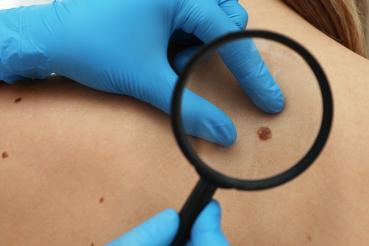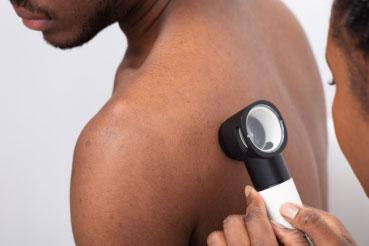Skin cancer is the most common cancer in the United States, affecting people of all skin colors. One in five Americans will develop a skin cancer during their lifetime, according to the American Academy of Dermatology, and every day nearly 20 Americans will die of melanoma, one of the most serious types of skin cancer.
“People need to know about skin cancer prevention and early detection,” advises Arjun Dayal, MD. A dermatologist with RUSH Copley Medical Group, he diagnoses and treats people with skin cancer every day.
Sunlight is the main cause
Exposure to solar ultraviolet (UV) radiation — commonly known as sunlight — is the principal cause of the two most common types of skin cancer, basal cell carcinoma and squamous cell carcinoma, he says. Chronic exposure to the sun can lead to skin cancer, and so can brief intense episodes of exposure. UV exposure early in life — during childhood or adolescence — may increase the risk of skin cancer even more than exposure in late adulthood.
Use of indoor tanning beds may also lead to skin cancer. UV radiation from indoor tanning beds has been associated with basal cell carcinoma, squamous cell carcinoma and melanoma skin cancers.
“With the high volume of skin cancer that I diagnose every day, I encourage all of my patients to practice sun safety and enjoy the outdoors responsibly,” Dayal says.
Choose your sun safety strategy
Sun safety can be any combination of applying sunscreen, wearing sun-protective clothing and hats, and seeking shade when solar rays are most intense. Many types of sunscreen are available, including sunscreens for people with sensitive skin and sunscreens for people of color.
Some clothing manufacturers include an ultraviolet protection factor, or UPF, rating on their clothes, indicating the UV blocking power of a sun-protective shirt or hat. You can pick the sun safety strategy that works for you.
Recognize the signs of cancer
Skin cancer is highly treatable if caught early, Dayal says, and that’s why you need to know the early signs of skin cancer. If you find a concerning mole, spot or lesion, you should promptly see your dermatologist to get it evaluated.
To recognize a potential skin cancer, you can view photographs of what to look for on the American Academy of Dermatology’s website. Your dermatologist is also a good resource. Dayal encourages patients to look — and feel — for persistent scaly spots, bumps, cuts and sores that never heal completely, and new or rapidly changing moles or growths.
If you’re concerned, visit a dermatologist
Some patients are afraid to have a concerning mole or lesion examined as they worry about the diagnosis, Dayal says, but this only leads to more anxiety, delays in diagnosis and treatment, and a potentially worse prognosis. He encourages patients to see their dermatologist promptly for any concerns — and routinely for skin cancer screening exams. The American Cancer Society recommends skin cancer screening every three years for people between the ages of 20 and 40 and every year for people over 40.
“Patients and their physicians can work together to help prevent skin cancer,” he says, “and diagnose and treat it early, should it arise.”




